
As most attorneys reading this article already know, a premises liability cause of action is merely a type of ordinary negligence action. Cases range from the routine “slip and fall” to the more complex, and injuries run the gamut from the relatively minor to the catastrophic. And personal injury lawsuits are on the rise. According to the latest available Judicial Business report, in the U.S. District Courts, 63,564 cases were filed in 2018, which is almost 10,000 more cases than the previous year. Regardless of the seriousness of someone’s injury, proving a Defendant’s liability and holding someone ultimately responsible for their actions focuses on questions of duty, breach, and proximate cause.
A Plaintiff must prove:
Proving knowledge, (Who? Knew what? When?), is critical. In Keech v. Kroger, the first element of proof, actual or constructive knowledge of some condition on the premises by the owner or operator, was the key point for this case.[2] Keetch argues that if Kroger created the condition, then Kroger is charged with knowledge of the condition as a matter of law. Keech’s argument is incorrect.[3] The Texas Supreme Court recognized that Keech’s theory was supported by a series of court of appeals opinions.[4] The approach of these courts of appeals is that an owner or occupier has sufficient knowledge of a condition to be liable for the injuries caused by the condition if the plaintiff proves the defendant:
In explaining why the Texas Supreme Court found Keech’s argument incorrect, the Texas Supreme Court concluded that none of the court of appeals opinions relied on the first alternative to establish liability.[6] The fact that the owner or occupier of a premises created a condition that posed an unreasonable risk of harm may support an inference of knowledge.[7] But, the Texas Supreme Court held that a jury still must find that the owner or occupier knew or should have known of the condition.[8] Making the inference as a matter of law is improper unless that knowledge is uncontroverted. Kroger denied knowledge of the condition, so the inference of knowledge could not be made as a matter of law.[9]
Proving knowledge, (Who? Knew what? When?), proved critical once again in yet another Kroger-related case, Austin v. Kroger.[10] If Keech can be said to stand for the proposition that when a property owner denies knowledge of an alleged condition then no inference of knowledge can be made as to that condition as a matter of law, then Austin represents the other side of that coin. If a Plaintiff can be shown to have even a hint of the condition that led to their injury, then their premises liability cause of action might, as a matter of law, face dismissal as a result of a motion for summary judgment.
Austin did not reach the Texas Supreme Court via the usual appellate route but rather through a certified question from the United States Court of Appeals for the Fifth Circuit.[11] The facts in Austin are relatively straightforward, but the issues are not. Randy Austin fell while mopping a restroom floor at the Kroger store where he worked in Mesquite, Texas. An oily liquid had leaked through the store’s ventilation ducts after another Kroger employee power-washed the store’s condenser units, creating spills in both the men’s and women’s restrooms. Consistent with Austin’s duties as a self-described “floor clean-up person,” Austin’s supervisor directed him to clean the spills. Kroger’s safety handbook recommended that employees clean spills using a “Spill Magic” system that involved a powdery absorbent product, a broom, and a dustpan. According to the handbook, using this system reduces the likelihood of a slip-and-fall by 25%.
Contrary to the handbook’s instruction to store managers, however, the system was not available at the store that day. As a result, Austin attempted to clean the liquid with a mop. He successfully cleaned the women’s room and then moved to the men’s room, where the brownish liquid covered about 80% of the floor. Recognizing the danger that the slippery liquid presented, he placed “wet floor” signs around the area and carefully took “baby steps” as he moved throughout the spill. After successfully cleaning 30% to 40% of the spill, Austin slipped in the remaining liquid and fell, fracturing his femur and dislocating his hip. Consequently, he spent nine months in the hospital and underwent six surgeries, leaving his left leg two inches shorter than his right.[12]
The Texas Supreme Court held that outside of the employment context, a landowner sued for premises liability may rely on an invitee’s awareness of the dangerous condition as evidence of the invitee’s own negligence and proportionate responsibility, as a defense to the invitee’s claims.[13] But, the Court also reaffirmed a landowner’s basic premises-liability duty to invitees, which are a duty to:
The Court explained, however, that when the condition is open and obvious or known to the invitee, the landowner is not in a better position to discover it. When invitees are aware of dangerous premises conditions—whether because the danger is obvious or because the landowner provided an adequate warning—the condition will, in most cases, no longer pose an unreasonable risk because the law presumes that invitees will take reasonable measures to protect themselves against known risks.[15] The Court further stated, “A landowner “is not an insurer of [a] visitor’s safety.”[16]
This holding[17], in effect, provides the ultimate defense for property owners in those situations where the Plaintiff has even the slightest knowledge of the dangerous condition. In a nutshell, it shifts the burden to the Plaintiff to prove they did not know about the hazardous condition, thereby relieving the property owner of its legal duty to warn. Some commentators have concluded that this holding effectively reinstates the “no duty” doctrine in Texas, which the Court had abolished nearly forty years ago in Parker v. Highland Park, Inc. (1978).[18] Others have stated that it impacts Plaintiff’s burden of proof. Following Austin, Plaintiffs have to prove:
Before Austin, plaintiffs only had to prove the first two facts. The addition of facts three and four will make it more difficult for plaintiffs to win in premises-liability cases.[19]
Like the recent shift in Texas appellate courts where “slip and fall” premises liability cases are now being considered by courts as health care liability claims and being dismissed because the Plaintiff failed to meet Chapter 74’s 120-day expert report rule[20], this apparent requirement (that the plaintiff was not aware of the danger) is being more and more relied on by courts to support Defendants’ motions for summary judgment.
[1] Corbin v. Safeway Stores, Inc., 648 S.W.2d 292, 296 (Tex. 1983).
[2] 845 S.W.2d 262, 265 (Tex. 1992).
[3] Id.
[4] Citing the following cases in support of its statement. See, Texas Farm Products Co. v. Stock, 657 S.W.2d 494, 502 (Tex. App.–Tyler 1983, writ ref’d n.r.e.); Johnson v. Kroger, Inc., 623 S.W.2d 479, 480-81 (Tex. App.–Corpus Christi 1981, no writ); Robledo v. Kroger Co., 597 S.W.2d 560, 560 (Tex. Civ. App.–Eastland 1980, writ ref’d n.r.e.); Foodway, Inc. v. Lopez, 480 S.W.2d 227, 228 (Tex. Civ. App.–El Paso 1972, no writ); H.E. Butt Grocery Co. v. Kirkwood, 384 S.W.2d 790, 791 (Tex. Civ. App.–Corpus Christi 1964, no writ); Great Atlantic & Pacific Tea Co. v. Giles, 354 S.W.2d 410, 412 (Tex. Civ. App.–Dallas 1962, writ ref’d n.r.e.); Sherwood v. Medical & Surgical Group, Inc., 334 S.W.2d 520, 521 (Tex. Civ. App.–Waco 1960, writ ref’d); R.R. Beard v. Henke & Pillot, Inc., 314 S.W.2d 844, 845 (Tex. Civ. App.–Beaumont 1958, no writ); H.E. Butt Grocery Co. v. Johnson, 226 S.W.2d 501, 502 (Tex. Civ. App.–San Antonio 1949, writ ref’d n.r.e.).
[5] Keech, 845 S.W,2d at 265.
[6] Id.
[7] Id. (citing Corbin, 648 S.W.2d at 296.).
[8] Id.
[9] Keech, 845 S.W.2d at 265.
[10] 465 S.W.3d 193 (Tex. 2015). The Texas Supreme Court also discussed worker’s compensation and non-subscriber issues in this case, but these issues will not be addressed in this article.
[11] Austin v. Kroger Tex. L.P., 746 F.3d 191 (5th Cir., 2014). Reviewing the parties’ arguments, the Fifth Circuit concluded that the cases on which the parties rely represent “arguably conflicting Texas Supreme Court precedent.” 746 F.3d at 197. The Texas Supreme Court explained that it accepted the certified question “as an opportunity to provide greater certainty in this important area of the law.” Austin, 465 S.W.3d at 201. After the Texas Supreme Court issued its decision, the Fifth Circuit revisited this case. Austin v. Kroger, L.P., 864 F.3d 2017 (5th Cir., 2017).
[12] Austin, 465 S.W.3d at 198-199.
[13] Id. at 199-200. (citing TEX. CIV. PRAC. & REM. CODE §§ 33.001-.017
– proportionate responsibility statute).
[14] Austin, 465 S.W.3d at 202.
[15] Id.
[16] Austin, 465 S.W.3d at 203. Citing Del Lago Partners, Inc. v. Smith, 307 S.W.3d 762, 769 (Tex. 2010) (quoting Restatement (Second) of Torts § 344 cmt. f).
[17] This holding is subject to two exceptions which will not be discussed in this article: the criminal activity exception and the necessary use exception. See, Austin S.W.3d at 204.
[18] See, Lone Star Bench & Bar, “Important Changes to the Landscape of Premises Liability Cases in Texas” by Andy Nikolopoulis. See, https://texastrial.foxrothschild.com/2017/06/important-changes-landscape-premises-liability-cases-texas/.
[19] See, “The Texas Supreme Court Issues Landmark Premises Liability Opinion.” June 12, 2015 by McCathern Law at https://mccathernlaw.com/the-texas-supreme-court-issues-landmark-premises-liability-opinion/
[20] TEX. CIV. PRAC. & REM. CODE § 74.351(a); See e.g. Ross v. St. Luke’s Episcopal Hosp., 462 S.W.3d 496, 500 (Tex. 2015); Reddic v. East Tex. Med. Ctr. Reg’l Health Care Sys., 474 S.W.3d 672 (Tex. 2015); Texas West Oaks Hospital v. Williams, 371 S.W.2d 171 (Tex. 2012); Loaisiga v. Cerda, 379 S.W.3d 248 (Tex. 2012); Marks v. St. Lukes Episcopal Hospital, 319 S.W.3d 658, (Tex. 2010).
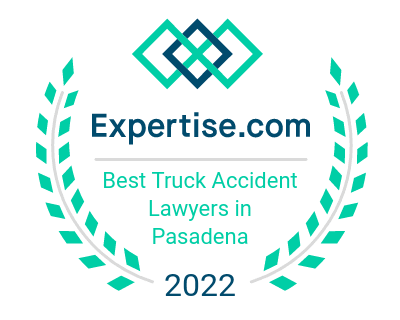 Top Truck Accident Lawyer in Pasadena
Top Truck Accident Lawyer in Pasadena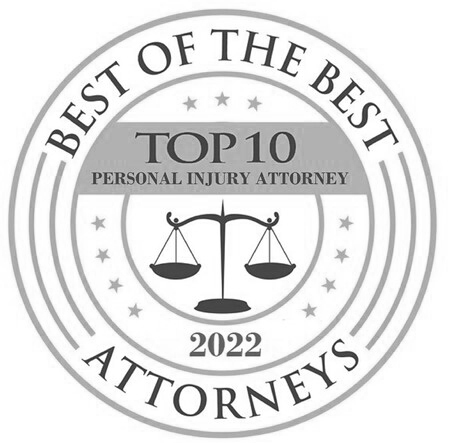 Best of The Best Attorneys
Best of The Best Attorneys Best of the Best Houston Chronicle 2021
Best of the Best Houston Chronicle 2021 Best Motorcycle Accident Lawyers in Houston 2021
Best Motorcycle Accident Lawyers in Houston 2021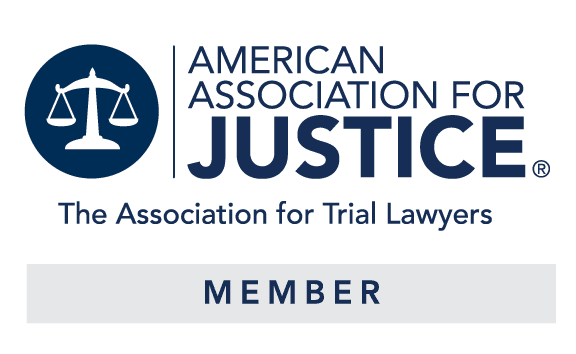 American Association for Justice Member
American Association for Justice Member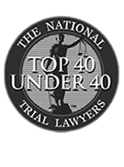 The National Trial Lawyers 2016 – (Top 40 under 40)
The National Trial Lawyers 2016 – (Top 40 under 40)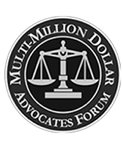 Multi-Million Dollar Advocates Forum 2016 (Top Trial Lawyer)
Multi-Million Dollar Advocates Forum 2016 (Top Trial Lawyer)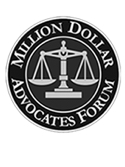 Million Dollar Advocates Forum 2019 (Top Trial Lawyer)
Million Dollar Advocates Forum 2019 (Top Trial Lawyer) America’s Top 100 Attorneys 2020 (High Stake Litigators)
America’s Top 100 Attorneys 2020 (High Stake Litigators)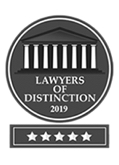 Lawyers of Distinction 2019, 2020 (Recognizing Excellence in Personal Injury)
Lawyers of Distinction 2019, 2020 (Recognizing Excellence in Personal Injury)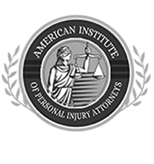 American Institute of Personal Injury Attorneys 2020 (Top 10 Best Attorneys – Client Satisfaction)
American Institute of Personal Injury Attorneys 2020 (Top 10 Best Attorneys – Client Satisfaction)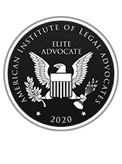 American Institute of Legal Advocates 2020 (Membership)
American Institute of Legal Advocates 2020 (Membership)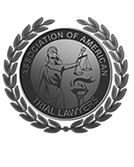 Association of American Trial Lawyers 2018 - Top 100 Award recognizing excellence in personal injury law
Association of American Trial Lawyers 2018 - Top 100 Award recognizing excellence in personal injury law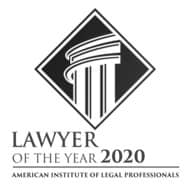 American Institute of Legal Professionals 2020 (Lawyer of the Year)
American Institute of Legal Professionals 2020 (Lawyer of the Year) Lead Counsel Verified Personal Injury 2020
Lead Counsel Verified Personal Injury 2020 The Houston Business Journal 2021
The Houston Business Journal 2021